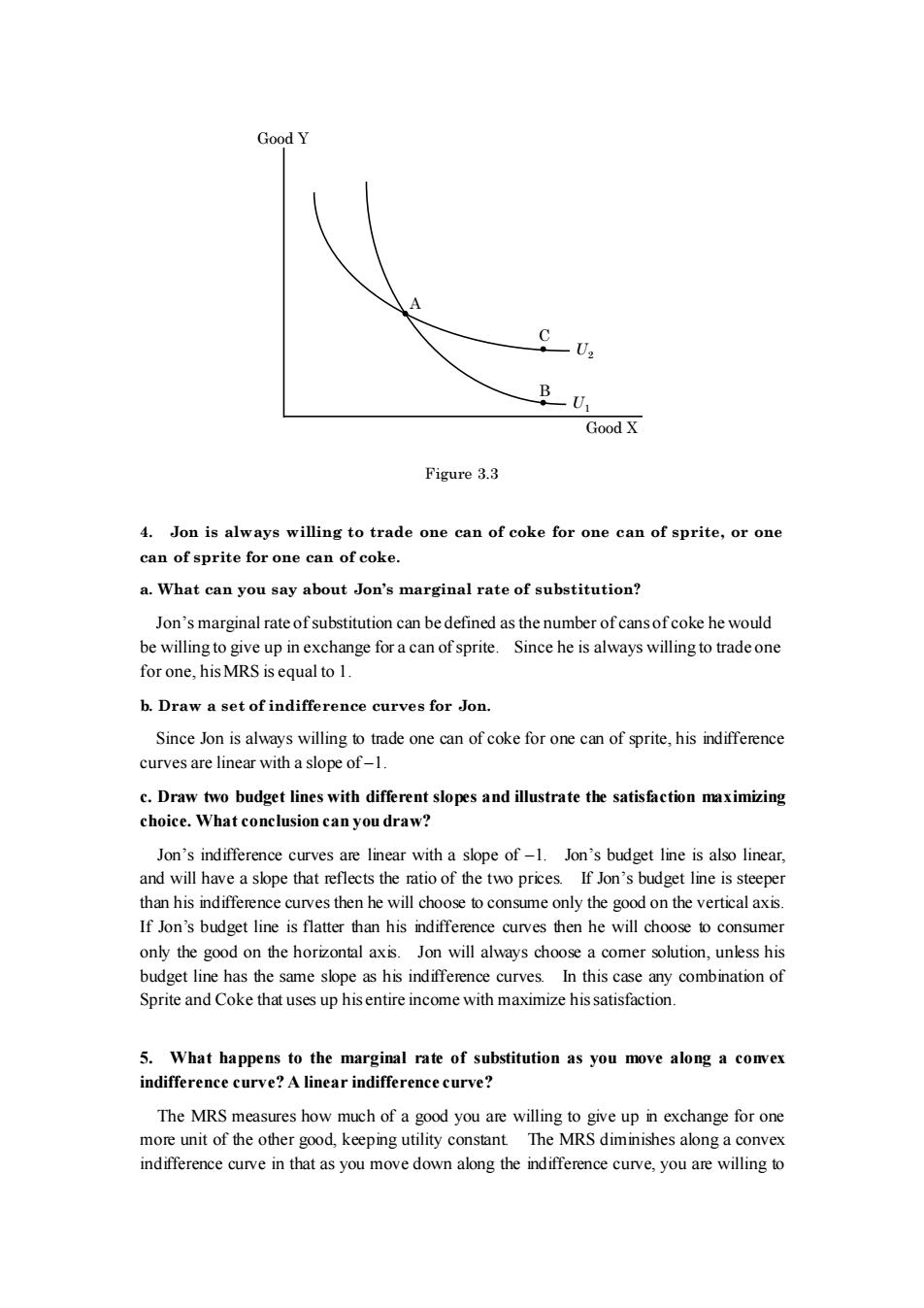正在加载图片...

Good Y cU: Cood又 Figure3.3 4.Jon is always willing to trade one can of coke for one can of sprite,or one can of sprite for one can of coke. a.What can you say about Jon's marginal rate of substitution? Jon's marginal rate ofsubstitution can be defined as the number of cansof coke he would be willing to give up in exchange for a can of sprite.Since he is always willing to trade one for one,hisMRS isequal to b.Draw a set of indifference curves for Jon. Since Jon is always willing to trade one can of coke for one of prite,his indifference curves are linear with a slope of1 c.Draw two budget lines with different slopes and illustrate the satisfaction maximizing choice.What conclusion can you draw? Jon's indifference curves are linear with a slope of-1.Jon's budget line is also linear. and will have a slope that reflects the ratio of the two prices If Jon's budget line is steeper than his indifference curves then he will choose to consume only the good on the vertical axis If on's budget line is flatter an he wll sumer only the good on the horiontal axis.Jon will always choose a comer solution,unss his budget line has the same slope as his indifference curves.In this case any combination of Sprite and Coke that uses up hisentire income with maximize his satisfaction. 5.What happens to the marginal rate of substitution as you move along a convex indifference curve?A linear indifference curve? The MRS measures how much of a good you are willing t more unit of the other good,keeping utility constant indifference curve in that as you move down along the indifference curve,you are willing to Good Y Good X A C B U1 U2 Figure 3.3 4. Jon is always willing to trade one can of coke for one can of sprite, or one can of sprite for one can of coke. a. What can you say about Jon’s marginal rate of substitution? Jon’s marginal rate of substitution can be defined as the number of cans of coke he would be willing to give up in exchange for a can of sprite. Since he is always willing to trade one for one, his MRS is equal to 1. b. Draw a set of indifference curves for Jon. Since Jon is always willing to trade one can of coke for one can of sprite, his indifference curves are linear with a slope of –1. c. Draw two budget lines with different slopes and illustrate the satisfaction maximizing choice. What conclusion can you draw? Jon’s indifference curves are linear with a slope of –1. Jon’s budget line is also linear, and will have a slope that reflects the ratio of the two prices. If Jon’s budget line is steeper than his indifference curves then he will choose to consume only the good on the vertical axis. If Jon’s budget line is flatter than his indifference curves then he will choose to consumer only the good on the horizontal axis. Jon will always choose a corner solution, unless his budget line has the same slope as his indifference curves. In this case any combination of Sprite and Coke that uses up his entire income with maximize his satisfaction. 5. What happens to the marginal rate of substitution as you move along a convex indifference curve? A linear indifference curve? The MRS measures how much of a good you are willing to give up in exchange for one more unit of the other good, keeping utility constant. The MRS diminishes along a convex indifference curve in that as you move down along the indifference curve, you are willing to